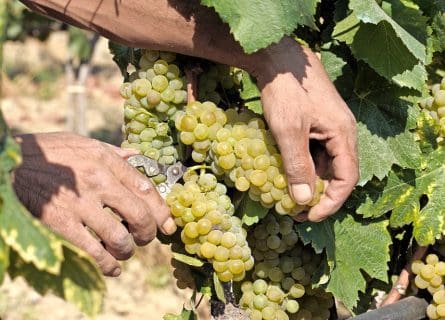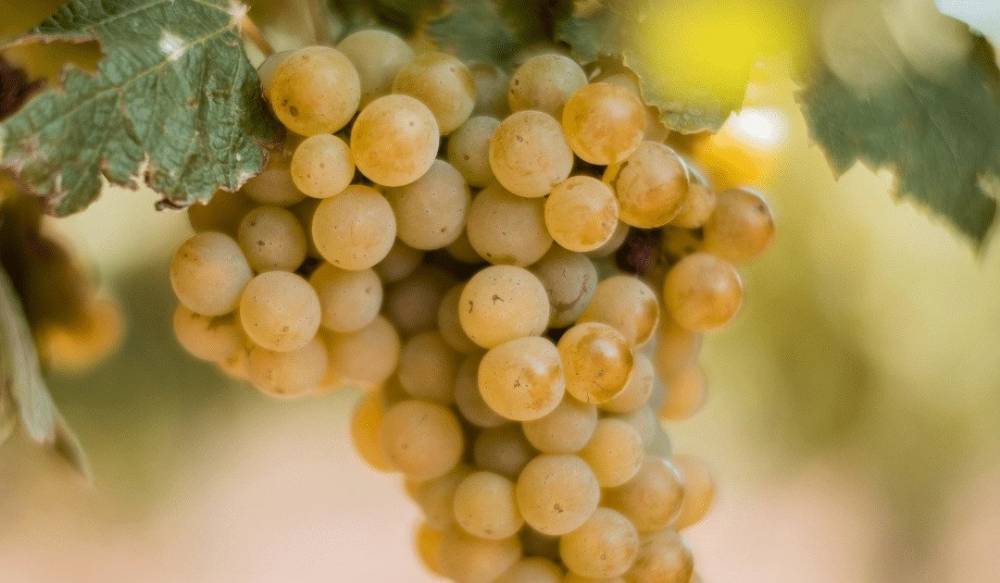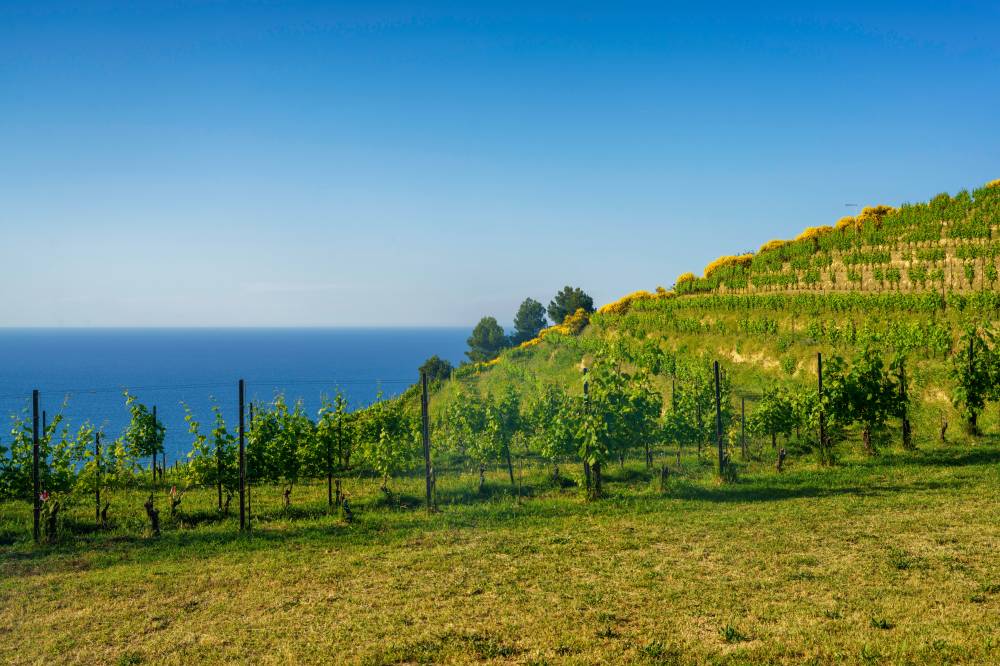
Greco Grape Variety
December 17, 2022
Discover Greco: Campania's Opulent White Wine with a Twist. Experience the Unique Flavors of Irpinia's Best Whites
By: James lawrence / Last updated: June 5, 2025
Estimated reading time: 8 minutes
The genius of Italy is its ability to cater to everyone: there are as many autochthonous grapes as varieties of pasta in the Italian peninsula! So, if you seek comfort and familiarity, immerse yourself in the warming reds of Chianti Classico and the ethereal pleasures of Barbaresco. Or, if you crave some of the finest celebratory bubbly outside of Champagne, leap headfirst into Franciacorta and Trento DOC.

Guide to Italian White Wine: Read more
However, to limit yourself to the established appellations would be a waste – Italy has the greatest diversity of individual wine styles, mesoclimates, and soils of all the world’s wine producers. The nation is using them to the full; revival stories are everywhere these days. Pecorino, the star white grape is Marche, is perhaps one of the most uplifting of these resurrection sagas. After teetering close to extinction in the 20th century, the grape has established itself as one of Europe’s finest whites: perfumed and uniquely fresh. It is another classic in the making.
Pecorino (no relation to the cheese) is thought to be indigenous to the Sibillini mountains of Marche. It has long been one of Italy’s greatest secrets – a coastal region that offers all the advantages of Tuscany, minus the tourists. In the pre-Roman era, Marche was inhabited by a tribe known as the Picens and, later on, a people native to Gaul (France). However, after the Romans consolidated their hold over the Italian mainland in 210 BC, the Gauls were driven out of Marche. As enthusiastic adopters of the grape (winegrowing was introduced to Western Europe by the ancient Greeks), the Romans encouraged the proliferation of vines across central Italy. Enjoying a goblet of wine was as important to local culture as the coliseum.
But how good was Roman wine? The writings of Pliny the Elder would suggest that the best vintages would last for decades: the famous Opimian, dedicated to the consulship of Opimus, was said to have lasted for over a century. The Romans achieved this astonishing longevity by smoking their wines over burning wood, stabilizing the molecules, and fortifying the wine against further oxidation.
By the time of the Western Empire’s collapse in 476 AD, the Romans had laid the foundations for almost all of the most famous vineyards of Europe. Some of the citizens of Marche would have celebrated the Roman’s demise, yet their departure opened the door to invasion from several competing European civilizations. First, the Goths attempted to subjugate central Italy, followed by the Byzantine forces of the Eastern Roman Empire, which endured until the 1400s. Marche was also briefly under the control of the Lombards of northern Italy until Emperor Charlemagne conquered much of Western Europe in the 8th century.
After that, much of central Italy fell under the control of the Papacy: territories were administered by the Catholic church with the blessing of the Holy Roman Emperor. In Italy, they included Marche, Romagna, Umbria, and Lazio. This arrangement survived until the late 19th century, albeit several powerful lords in the Middle Ages exerted great influence in the Marche region. Nevertheless, winegrowing was most definitely the religious establishment’s domain. Cathedrals and churches, but above all monasteries, controlled vast swathes of vineyards in Europe. Indeed, the Cistercians were responsible for the iconic walled vineyard of Clos de Vougeot in the Cote d’Or. It was within this stable framework of the church that the styles of wine, now commonplace in the world, came into being. Pecorino thrived under their stewardship, producing delicious white wines, which became the talk of Marche.
In the 17th century, the Papacy tightened its iron grip over Italian dominions – the last independent fiefdom, the Duchy of Urbino, was dissolved in 1631. Following the ephemeral Republic of Ancona, established in 1797, Marche became part of Napoleon’s Kingdom of Italy. This vast territory encompassed much of northern and central Italy, including Liguria, Tuscany, Umbria, Trentino, and Lazio. However, after Napoleon’s defeat in the 19th century, Marche became part of a unified Kingdom of Italy in 1860. This eventually created a national wine market, although many producers abandoned quality for quantity in the mid-20th century. From one perspective, the rise of vineyard mechanization, modern vinification techniques, and international markets did consumers no favors; a great deal of Pecorino was ripped out and replaced with Trebbiano.
By the 1960s, Pecorino was on the verge of extinction. Its salvation came in the 1980s when a local grower decided to investigate a parcel of obscure vines left to their own devices. This ‘wild’ vineyard, unloved and uncultivated, contained some Pecorino. Sensing a golden opportunity, the grower took some vine cuttings and replanted the grape – Pecorino soon returned to the hills of Tuscany, Abruzzo, and Umbria. This revival coincided with a renewed interest in premium Italian whites, particularly those made from indigenous varieties. Pecorino had been saved.
Nevertheless, only some are willing to embrace Percorino’s charms. Unlike the high-yielding Trebbiano, Pecorino rarely delivers a substantive crop; its small yield continues to deter the bulk producers. However, it is an early ripening variety, which usually ensures that the berries are picked while acidity levels are still vibrant. Moreover, Pecorino is renowned for its fighting spirit and robust nature – the vines have an inbuilt resistance to fungal diseases and black rot.
Winemakers love to work with Pecorino. It means ‘little sheep’ in Italian, a reference to the longstanding tradition of feeding Pecorino berries to sheep grazing on the hills of central Italy. Recently, the grape has become very trendy among sommeliers and wine buyers in the US, much appreciated for its attractive bouquet of stone fruit, lemon, orange peel, and honeysuckle. Moreover, Pecorino always offers a refreshing cut of ripe acidity. So it is not unlike Spain’s Albariño in terms of flavor profile and increasing popularity. And, like Albariño, Pecorino wines are seldom aged in new wood.
No: the overriding objective is primary fruit flavor – and intense aromatics! As a result, most wine producers follow a standardized recipe when making Pecorino. First, hand-harvested berries will be chilled and gently pressed – pneumatic cylindrical machines tend to yield the finest must, as the amount of pressure applied can be strictly controlled. The juice is then transferred to settling vats, where it is chilled. As a rule, Pecorino wines are made in stainless steel – a cool fermentation can be relied on to deliver fruit-driven white wine. Occasionally, the wines will be matured on their fine lees (yeasty sediment) for several months in stainless steel. This adds ‘fat’ and richness to the wine without extracting any oak flavors; growers also used concrete vats for the same purpose.
However, men like Francesco Cirelli prefer a different approach. He claims, with some justification, that fermentation in stainless steel produces a very cookie-cutter style of white. Therefore, Cirelli ages his Pecorino wines in amphorae – these terracotta jars allow gentle oxidation of the wine, as clay is porous. Yet it is a neutral material, which avoids any extraction of additional flavors. The resulting wine has a deeper color and opulent mouthfeel, although there is less upfront ripe fruit. Yet the food-matching possibilities are infinitely greater.

Italy has endless appeal. As the cradle of Europe’s greatest civilization, the country is famous for its temples and monuments, while millions flock every year to Italy’s exquisite countryside, beautiful beaches, and chic resorts. And if that isn’t enough, Italian food and wine are a match made in heaven.
The only potential fly in the ointment is overcrowding – particularly in July and August. In this case, allow us to introduce you to Marche and its neighbor Abruzzo. The Adriatic coastline and its interior may lack the fame of Tuscany and Campania, but these green hills are utterly unspoiled and a fertile source of exceptional wine. In southern Italy, Fiano, Falanghina, and Greco are all leading contenders for the title of Italy’s finest white. But in this quiet corner of the Apennines, Pecorino rules the roost. Its rebirth has transformed the white wine scene in central-eastern Italy; leading estates pull out all the stops for their top bottlings, combining freshness with substance.
Moreover, a host of outsiders have invested in Marche and Abruzzo in recent years, with dramatic effects on local quality. And the secret is starting to leak out: importers and sommeliers are helping to make Pecorino a household name in northern Europe and the US. Then again, it’s not a particularly hard sell – who could resist the cutting pungency of this grape, set against textbook acidity and lovely freshness? When grown in central Italy’s most attractively situated terroirs, Pecorino wines compete with the best of Alsace. Moreover, they are always keenly priced.
Pecorino is also a very food-friendly grape. As always, stick to local, regional dishes to get the best results: Brodetto and Pecorino are guaranteed massive success. This aromatic fish stew is a specialty of the Adriatic coast; Maccheroncini di Campofilone is another brilliant pairing. A simple dish of egg pasta and beef ragu, Pecorino’s bright acidity cuts through the richness and complements the saltiness of the beef. Our favorite match, however, has long been a chilled glass of Pecorino served alongside Moscioli. The name refers to wild mussels from the water surrounding the Conero Peninsula – a pristine piece of coastline in Marche. Often cooked in a fresh tomato and saffron broth, the mussels have no equal in Italian seafood. However, enjoying them with Pecorino takes the pleasure to another level.
If you would like us to customize an exclusive luxury tour, contact us and let us know your travel plans. We offer luxury food and wine tours for private groups of a minimum two guests. In addition, all of our private, chauffeured tours are available year-round upon request.

